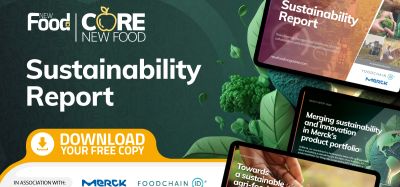Agriculture replaces fossil fuels as largest human source of sulphur
- Like
- Digg
- Del
- Tumblr
- VKontakte
- Buffer
- Love This
- Odnoklassniki
- Meneame
- Blogger
- Amazon
- Yahoo Mail
- Gmail
- AOL
- Newsvine
- HackerNews
- Evernote
- MySpace
- Mail.ru
- Viadeo
- Line
- Comments
- Yummly
- SMS
- Viber
- Telegram
- Subscribe
- Skype
- Facebook Messenger
- Kakao
- LiveJournal
- Yammer
- Edgar
- Fintel
- Mix
- Instapaper
- Copy Link
Posted: 11 August 2020 | Sam Mehmet (New Food) | No comments yet
Historically, coal-fired power plants were the largest source of reactive sulphur, but this has now been replaced with cropland agriculture.


A new study has found that fertiliser and pesticide applications to croplands are now the most important source of sulphur to the environment.
Sulphur is a component of acid rain which gained attention in the 1960s and 1970s when scientists linked degradation of forest and aquatic ecosystems across the northeastern US and Europe to fossil fuel emissions from industrial centres often hundreds of kilometres away. This research prompted the Clean Air Act and its Amendments, which regulated air pollution, driving sulphur levels in atmospheric deposition down to low levels today.
“It seemed like the sulphur story was over,” said Eve-Lyn Hinckley, assistant professor of environmental studies at University of Colorado, Boulder, and lead author of the study. “But our analysis shows that sulphur applications to croplands in the US and elsewhere are often 10 times higher than the peak sulphur load in acid rain. No one has looked comprehensively at the environmental and human health consequences of these additions.”
“Although sulphur is applied to agricultural lands to improve the production and health of crops, it can have detrimental effects to agricultural soils and downstream waters, similar to what occurred in remote forest landscapes under acid rain,” explained Charles Driscoll, a professor at Syracuse University and co-author of the study.
The researchers examined trends in sulphur applications across multiple important crops in the US, including corn in the Midwest, sugarcane in Florida, and wine grapes in California. Their models of surface water sulphate export demonstrated that while areas like New England show declining trends in response to recovery from historic atmospheric deposition, sulphate export from agricultural areas is increasing.
Driscoll said an example of the impacts of agricultural applications of sulphur is the enhanced formation of methylmercury in waters draining agricultural lands, such as the Everglades Agricultural Area in Florida. Methylmercury is a potent neurotoxin which accumulates in food chains leading to high concentrations in fish and increasing exposure of mercury to humans and wildlife that consume these fish.
The researchers predict that increasing trends will continue in many croplands around the world, including places like China and India that are still working to regulate fossil fuel emissions.
Hinckley and Driscoll said they believe it is time for the research community to apply lessons learned while investigating the effects of nitrogen and phosphorus fertilisers to studying the implications of high sulphur use in agriculture. This research must seek not only to document its environmental and human health effects, but also to collaborate with farmers to investigate how to optimise sulphur use, they noted.
Related topics
Environment, Health & Nutrition, Research & development, Supply chain, Water








